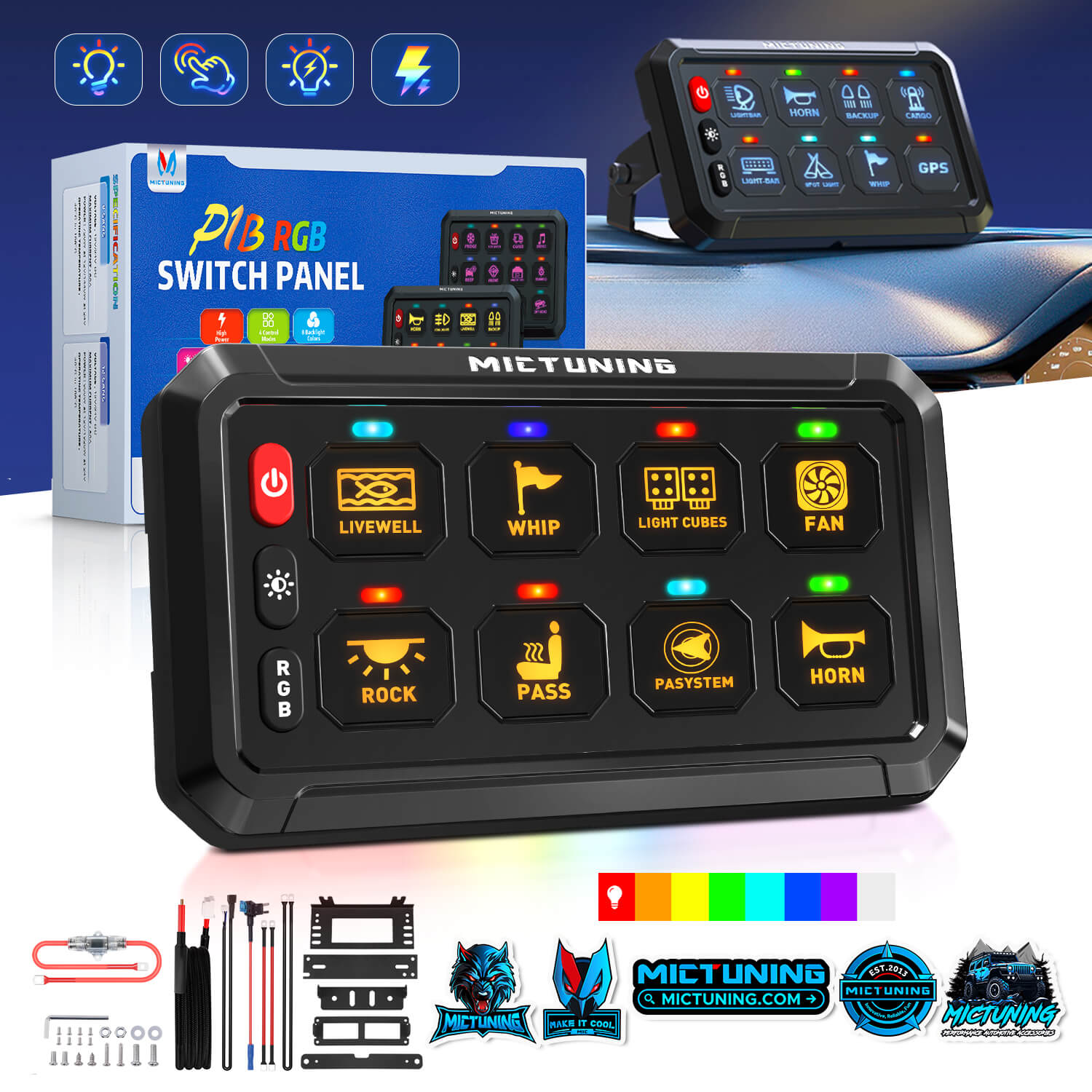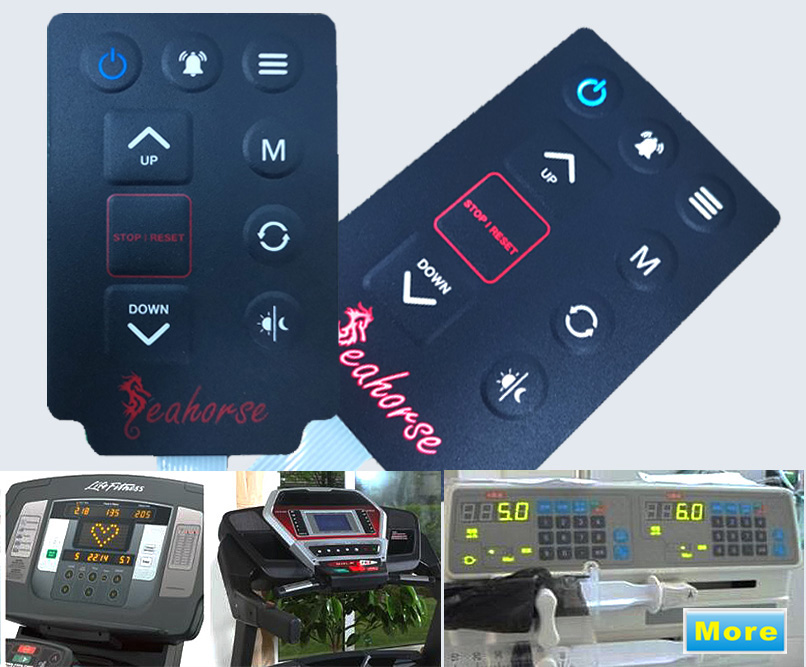The Production Process Behind Switch Backlighting: What You Need to Know
The production procedure behind button backlighting includes complex actions that secure capability and longevity. From the selection of materials to the assembly of elements, each phase is essential. Automated equipment plays a substantial duty in incorporating LEDs and diffusive aspects. Quality control steps further assure that the final item meets standards. As personalization alternatives expand, the possibility for ingenious layouts comes to be obvious. What variables will form the future of switch backlighting innovation?
Comprehending Switch Backlighting Innovation
Although switch backlighting might feel like an easy feature, it incorporates different technologies that boost individual experience in digital devices. At its core, backlighting serves to light up switches, making them noticeable in low-light settings. This performance relies upon different methods, such as LED and fiber optic innovations, each offering special benefits. LEDs are extensively preferred for their performance, longevity, and vivid colors, permitting personalized lights choices. In comparison, fiber optics can create a softer radiance, offering a much more visually pleasing appearance.Moreover, the assimilation of backlighting can enhance individual availability, especially for people with visual problems. The design of backlit switches also thinks about energy usage, as contemporary gadgets aim to balance illumination with battery life. Ultimately, the application of button backlighting modern technology plays an important role in enhancing the usability and appeal of electronic gadgets, changing regular interfaces into visually involving experiences.
Key Components of Backlit Switches Over
The important parts of backlit switches consist of several vital aspects that function together to deliver efficient illumination and capability. At the core is the button system itself, which can be either digital or mechanical, enabling user communication. Surrounding this system are LED lights, which offer the illumination necessary for presence in low-light problems. These LEDs are generally installed on a motherboard, ensuring proper connectivity and power distribution.Additionally, a diffuser is commonly used to equally disperse the light released by the LEDs, developing an uniform radiance throughout the switch surface area. The real estate of the switch plays a considerable role as well, as it has to secure interior components while allowing light to go through purposefully placed openings or translucent products. A published visuals overlay might be used to share signs or text, enhancing functionality and visual appeals. Together, these parts guarantee the effectiveness of backlit switches in different applications.
Product Choice for Sturdiness and Aesthetic appeal
Product selection plays an essential role in balancing durability and aesthetic appeals in button backlighting. Trick homes of products, such as resistance to wear and environmental variables, considerably affect their resilient efficiency. Furthermore, aesthetic layout factors to consider have to straighten with functionality to create aesthetically enticing and robust products.
Trick Material Quality
Durability and looks are crucial consider the material option process for switch backlighting. The products used need to stand up to mechanical stress and anxiety, high temperature levels, and prospective chemical direct exposure while maintaining their visual allure. Common choices include polycarbonate and acrylic, which supply robust impact resistance and optical quality. These materials can sustain repeated use without splitting or fading. In addition, the choice of light diffusion homes is necessary; products need to efficiently distribute light equally to enhance exposure. Surface area therapies, such as finishings, can further improve durability and scrape resistance. Ultimately, picking the ideal materials assurances that switch over backlighting executes accurately with time, while additionally adding to the total layout and individual experience.
Aesthetic Layout Considerations

Resilient Efficiency Aspects
The interaction between visual appeals and capability prolongs beyond aesthetic charm, encompassing the durable performance of button backlighting. Product choice is necessary in attaining durability and preserving aesthetic high qualities in time. Top quality plastics, such as polycarbonate or abdominal muscle, are often favored for their resistance to use and ecological aspects. In addition, the option of LED elements influences durability, as superior-grade LEDs supply boosted illumination and reduced heat outcome. Coatings, such as uv-resistant or anti-fingerprint surfaces, can better protect against degradation and staining. By integrating robust products and progressed modern technologies, suppliers can ensure that switch backlighting not just satisfies aesthetic standards however additionally stands up to the roughness of everyday use, ultimately improving individual fulfillment and item lifespan.
The Assembly Process of Backlit Switches
The assembly process of backlit switches involves precise element prep work methods to identify compatibility and performance. A structured production line operations is vital to optimize efficiency and minimize production time. Furthermore, durable quality assurance steps are carried out to guarantee that each button meets sector requirements and client expectations.
Component Prep Work Techniques
Efficient setting up of backlit buttons begins with precise preparation of their components, making sure that each component satisfies the required specifications for capability and resilience. This prep work procedure includes the option of high-grade products, such as resilient plastics and effective light-emitting diodes (LEDs) Each element undertakes extensive assessment and testing to identify any type of flaws that might hinder performance. In addition, parts may be coated or pre-treated to boost their strength against wear and tear. Switch Backlighting. Proper cleansing and managing techniques are additionally essential to protect against contamination before setting up. By carrying out these component preparation strategies, makers can enhance the assembly process, decrease the possibility of failures, and boost the total top quality of the final backlit button item
Assembly Line Operations
Improving the production line workflow for backlit buttons involves a collection of worked with steps that assure each part is properly incorporated into the end product. Originally, the base of the switch is placed on the conveyor system, where automated machinery precisely positions the LED lights into the assigned ports. Following this, a layer of diffusive product is included to assure even light distribution. Next, the button cap is firmly attached, and electrical connections are made with accuracy to assure functionality. Workers monitor the process at different stages, checking for positioning and safe and secure installations. Ultimately, the set up buttons relocate to product packaging, ready for delivery. Each step is developed to enhance efficiency while keeping the honesty of the end product.

Quality Assurance Steps
Quality assurance measures in the setting up procedure of backlit switches are vital to validate that each unit satisfies rigorous performance and aesthetic criteria. At various stages of setting up, aesthetic assessments are performed to recognize any kind of flaws in parts, such as inappropriate LED positioning or malfunctioning soldering. Functional testing is executed to confirm that the backlighting runs appropriately, with uniform brightness and shade uniformity across each button. Additionally, automated testing devices may be utilized to check for electric integrity and responsiveness. Any type of systems failing these analyses are reworked or thrown out to maintain quality control. Detailed documents of these quality checks likewise facilitates traceability and constant renovation, confirming that manufacturing techniques evolve to fulfill customer assumptions and market requirements.
Quality Assurance Steps in Production
While ensuring the stability that site of button backlighting production, producers execute a range of quality assurance measures to keep high requirements. These procedures incorporate numerous stages, beginning with the selection of raw materials. Vendors are carefully vetted to assure that only top notch parts are made use of. Throughout the manufacturing process, routine inspections are carried out to determine any type of problems or variances in the backlighting systems.Automated screening tools plays a crucial role in assessing the capability and durability of the items. This includes look for luminescent intensity, shade accuracy, and life expectancy. In addition, makers usually use analytical procedure control (copyright) methods to keep track of manufacturing variables, enabling immediate adjustments when inconsistencies happen. Post-production, last examinations assure that the completed products meet predefined specifications prior to they are packaged and delivered. By sticking to these detailed quality assurance procedures, producers can confidently supply high-performing and reputable button backlighting remedies to their clients.
Personalization Options for Enhanced Customer Experience
A large range of customization choices is offered for button backlighting, enabling users to improve their overall experience. Customers can select from numerous colors, illumination levels, and lights results to tailor the backlighting to their preferences. Numerous suppliers supply software program that makes it possible for individuals to produce dynamic illumination accounts, which can change based upon use scenarios, such as gaming or typing. Some switches even use programmable functions, permitting certain keys to light up in distinctive colors, helping in functionality and aesthetics.Furthermore, individuals might select between various sorts of materials and coatings for the button housing, impacting both the feel and look of the backlighting. Transparent or clear materials can improve light diffusion, producing a more uniform radiance. Ultimately, these personalization choices promote a tailored interface that not only improves functionality but likewise shows specific design, adding to a more engaging individual experience.
The Future of Change Backlighting Innovations
As technology proceeds to breakthrough, the future of switch backlighting developments is positioned to provide also much more innovative functions and enhanced user experiences. Emerging trends indicate a shift towards flexible illumination systems that change brightness and color based on user preferences and ambient problems. This personalization could improve usability and access, particularly for those with visual impairments.Furthermore, assimilation with wise home environments offers the possibility for synchronized lights impacts that boost the general environment of a space. Breakthroughs in products, such as versatile OLEDs, might cause thinner, much more reliable styles, permitting greater adaptability in applications.Additionally, energy-efficient options, such as solar-powered alternatives and low-power leds, will certainly add to a sustainable future in backlighting - Switch Backlighting. Developments in making strategies, such as 3D printing, may further facilitate personalization, allowing users to produce one-of-a-kind switch styles. Generally, the future of switch backlighting that site guarantees a blend of capability, aesthetic allure, and sustainability
Frequently Asked Inquiries
What Kinds Of Applications Generally Utilize Backlit Buttons?
Backlit switches are generally used in various applications, including automobile control panels, consumer electronics, medical gadgets, and commercial control board. These applications gain from boosted presence and functionality, especially in low-light problems, enhancing user experience and performance.
Just How Do Backlit Switches Influence Energy Intake?
Backlit switches can affect power intake by needing extra power for illumination. Depending on the modern technology made use of, such as LED versus conventional bulbs, the influence on overall energy use can differ significantly across various applications.
Can Backlit Switches Over Be Repaired if Damaged?
Backlit switches, if harmed, can frequently be fixed relying on the extent of the damage. Minor problems like LED failing may be fixable, while much more serious damage could necessitate full substitute of the button.
What Are the Safety Standards for Backlit Switch Over Manufacturing?
The safety and security requirements for backlit button production include electrical safety, material durability, and individual availability. Conformity with regulations warranties that items are trusted, decrease threats, and give a risk-free customer experience in numerous applications.

How Do Ecological Factors Affect Backlit Switch Efficiency?
Environmental aspects, such as temperature and moisture, greatly influence backlit button performance. Severe problems can impact materials' sturdiness and light result, possibly resulting sites in reduced performance and life expectancy of the buttons under varying operational atmospheres. Button backlighting might appear like a simple feature, it encompasses various modern technologies that boost user experience in digital gadgets. Product selection plays a necessary role in balancing longevity and aesthetics in switch backlighting. Sturdiness and appearances are crucial aspects in the product option process for switch backlighting (Switch Backlighting). Visual style plays a vital duty in the choice of products for switch backlighting, as it directly affects individual assumption and complete satisfaction. Some switches even supply programmable features, enabling details keys to brighten in distinct colors, helping in capability and aesthetics.Furthermore, users may choose in between different types of products and surfaces for the switch housing, impacting both the look and feel of the backlighting